Tunisia is one of those interesting destinations – cultural rich and a provider of both positive and negative travel experiences, I wouldn’t say that it’s for the feint hearted! Yet the beauty of the beaches, mosques and Kasbah’s makes it appealing to visit. I have to be honest, although there were some things I didn’t like about Tunisia, I would still recommend it and I wouldn’t hesitate to go back. Today I present to you my ultimate Tunisia Itinerary!
Disclosure: templeseeker.com is a participant in the Amazon Services LLC Associates Program and other affiliate advertising programs designed to provide a means for us to earn fees by linking to Amazon.co.uk, Get your Guide and other affiliated sites. Affiliate links may be used in this Tunisia Itinerary, but they do not impact on the price that you pay and they do help me to get this information to you for free.
Moving around or choosing a base?
There are two options for this Tunisia itinerary. Firstly, taking a road trip and secondly using one or two destinations as a base. If you want to put it in context, Tunisia is about 1.5 times smaller than the UK. This means that if you can access a vehicle or hire a driver, many destinations are doable as day trips.
Taking a Tunisia Roadtrip
There are two ways that you can approach this itinerary. The first is to do a Tunisia road trip and travel from place to place listed below. You can hire a driver to take you around or rent your own car (driving is on the right). Ensure that you have your passport ID handy when you travel around. Also be aware that there are some checkpoints and toll roads where you will see police with guns – although initially scary, this is quite normal for Tunisia.
Having 2 bases – Hammamet and Sfax
The second option (rather than a Tunisia roadtrip) is to make it a two centre holiday with a week in Hammamet and a week in Sousse, because you can explore many of these destinations as day trips from there. You can easily do a day trip to Tunis, Carthage and Kairouan, Sousse and Monastir from Hammamet if you hire a private guide. Spend 7-10 days being based in Hammamet for these destinations. You can actually do Kairouan and El Jem in one day on a tour (it’s a bit rushed but what you see is amazing). Then you can relocate to Sfax to explore Sfax and Djerba for the last few days. Doing it as a 2 centred Tunisia holiday means less stress of repacking and relocating.
Is Tunisia Worth Visiting?
Tunisia is absolutely worth visiting! Tunisia is rich in North African culture – you will have a lot of fun haggling in the souks and seeing the beautiful Mosques and Kasbahs. What may surprise you is that Tunisia is also very rich in Roman ruins (Carthage, Dougga and El Jem Amphitheatre). So, if you are a bit of a history buff or culture vulture like me, Tunisia is definitely worth a visit. I am currently planning my second trip to see some of the more Southern destinations that I missed out on last time.
There are a few downsides as I have mentioned, including food hygiene, stray dogs and touts/scammers. I give the full run down in my article on ‘My Holiday in Tunisia: The Good, The Bad and The Ugly!‘
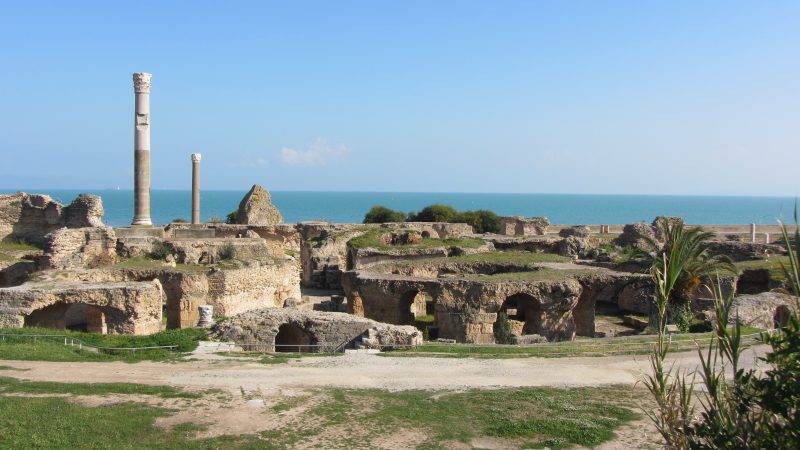
What is the best time to visit Tunisia?
It’s best to visit Tunisia in the Spring (April-May) or the autumn (October-early November). I went to Tunisia in March and it was a little on the cold side – certainly not beach weather! However, saying that, if you pack a fleece and a rain jacket and are mainly going for the historical sights, then March is OK. I happily travelled round in March and although there were a couple of rainy days, it was not not cold and not uncomfortably hot.
I’ve also heard from people who have visited in July and August saying that they had sun burn or sun stroke and it was literally too hot to do anything! September may be a decent time to go if you are a sun seeker, because the intense August heat will have calmed down and the UK school holidays are over meaning the Tunisian beaches are less crowded.
Tips for Travelling in Tunisia
- Travel in April, May or early October for the best and most comfortable weather.
- It’s prohibited to take Tunisian Dinars out of the country. Take a combination of GBP and a credit/Debit card with you. My Barclays Debit card worked in Tunisia and in Tunisian ATMs (I think that there was a 4% charge)
- Take walking boots as you are likely to do a lot of walking in Tunisia, and sometimes it will be on uneven ground (such as Carthage).
- Ladies can consider packing a headscarf to cover their hair, particularly for visiting Mosques inside palaces and tombs.
- Use French! If you don’t speak Arabic, your French will help you in Tunisia as it was previously a French colony.
- Dress conservatively – Especially in the souks (women should avoid strappy dresses, short skirts and vest tops).
- Hire a private driver or guide if you can afford it – but don’t get ripped off.
- Carry your passport with you when driving or being driven by a driver/guide. If the Tunisian police stop you, they will want to check your ID.
- Don’t exchange money people (even in your hotel) – it’s usually a scam.
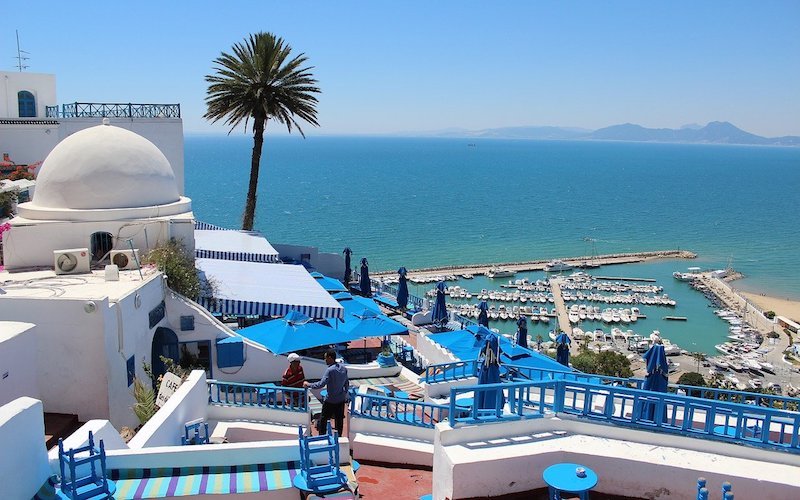
The Ultimate Tunisia Itinerary 2-3 Weeks
This Tunisia itinerary would ideally take 2 weeks, although it could be crammed into 10 days if you pick up the pace and skip Djerba at the end. You could extend it to 3 weeks by slowing down the pace and adding on Tozeur. I recommend that you start in Tunis, but you may want to switch things around a bit depending on where you fly to. Destinations included in this itinerary are:
- Tunis
- Carthage
- Sidi Bou Said
- Hammamet
- Nabuel
- Kairouan
- El Djem
- Sousse
- Monastir
- Sfax
- Djerba
- Tozeur (optional)
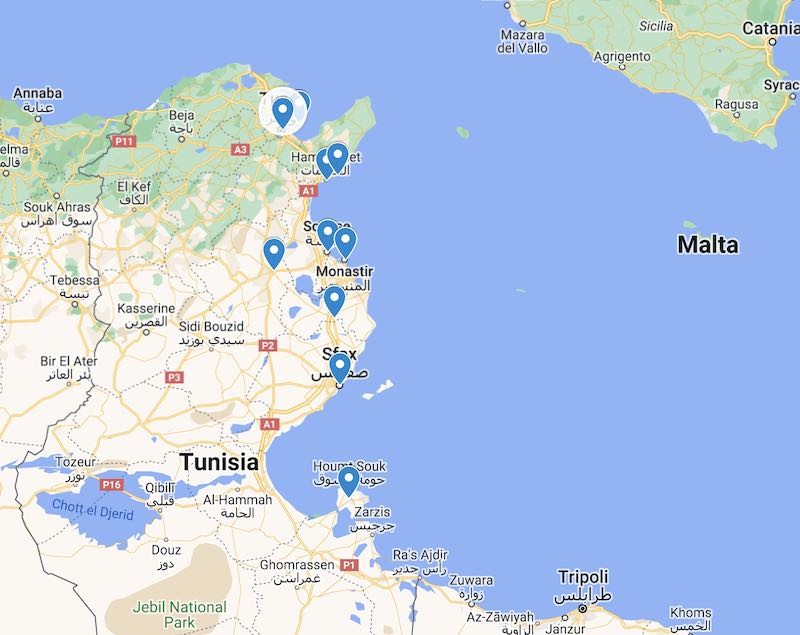
Tunis – First 2 days
You are likely to fly into Tunis or Enfidha airport (Hammamet). I would recommend that you do the sights of Tunis and Carthage quickly in just 2 days and then continue your Tunisia itinerary by travelling South. Tunis is busy, smelly and there are a lot of scammers who pray on the tourists (particularly from the cruises).
Day 1 Tunis:
On your first day you can do a walking tour of Tunis city. I would recommend that you get up early to avoid the cruise ship mass descent, and also go early to avoid the touts and scammers who tend to come out later in the day.
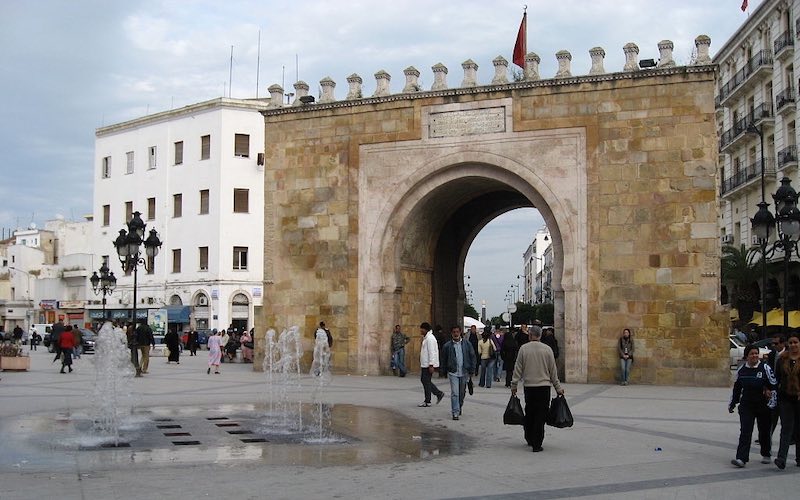
- The Bardo Museum – One of the most famous Museums in Africa and one of the largest collections of Mosaics in the World. The building is as impressive as the artefacts it contains. Go there first and get there as early as possible.
- Medina and Al-Zaytouna Mosque – Explore the bustling Medina with Al-Zaytouna Mosque at the centre. Non Muslims are not allowed inside the actual Mosque, but you can view the Courtyard from nearby restaurants and cafes.
- Cathedral of Saint Vincent de Paul – This Roman Catholic Church is a beautiful surprise in the Middle of Tunis – the cathedral is dedicated to Saint Vincent de Paul (the patron saint of charity).
- Place du 14 Janvier · Kasbah Square · Place de L’Independance – This will give you a modern contrast to the Medina area.
- Eat out in Tunis – Head to a popular restaurant to try some local food at Le Zink or Chez Slah.
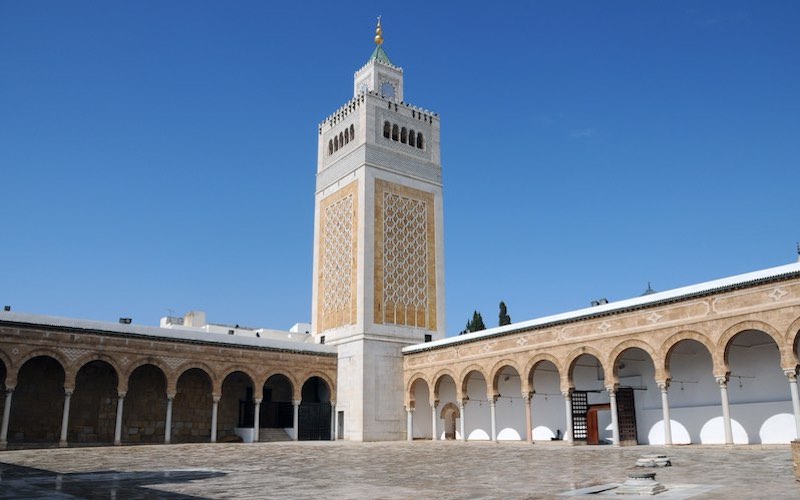
Day 2 Tunis:
On your second day you will be exploring the amazing ruins of Carthage, and if time allows, Sid Bou Said. When you visit to Carthage you should visit:
- Carthage Amphitheatre – Built to seat up to 30,000 spectators.
- Roman baths of Antoninus – These are the most spectacular ruins of Carthage and the outlines of the Roman baths are still visible today.
- Roman Tophet – An ancient burial ground that is believed to have been used for ritual sacrifices.
- Byrsa Hill – Roman Ruins, St Louis Cathedral and Carthage National Museum
- Punic Port – The Old Ports of the city during ancient times.
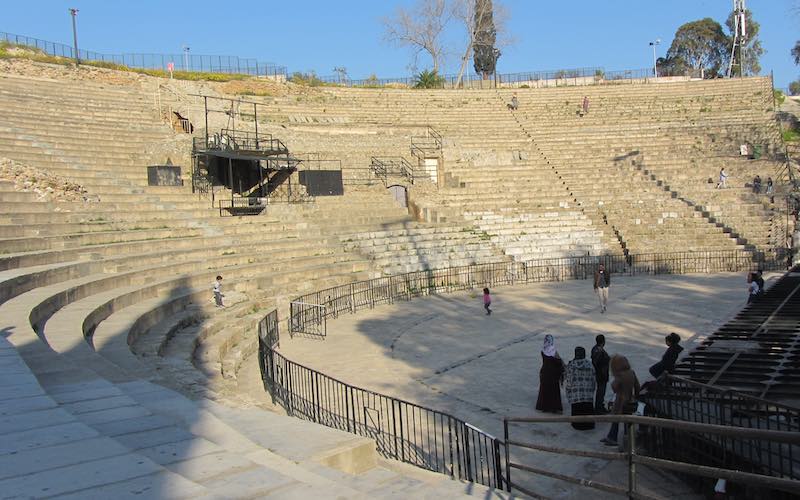
You can then take a train or a short taxi ride to Sidi Bou Said, a calm and beautiful port on the peninsular, which is famous for its white washed buildings and cobbled streets.
Day 3-5 Hammamet (3 days in total)
On the third day of your Tunisia itinerary it’s time to get out of the Tunisian capital and head to Hammamet where you will experience a calmer atmosphere and beautiful sandy beach. I would suggest 3 days in Hammamet to enjoy and relax and add on market day in Nabuel, but some people just spend 2 days here and then move on. Remember though, that travel is intense and I would add in a relaxing beach day here.
- Day 3 Hammamet – Explore Hammamet Kasbah and Medina.
- Day 4 Hammamet – Pupput Roman site and Hammamet Museum of Religions.
- Day 5 Treat yourself to a beach day and relax on Hammamet Beach OR market day in Nabuel.
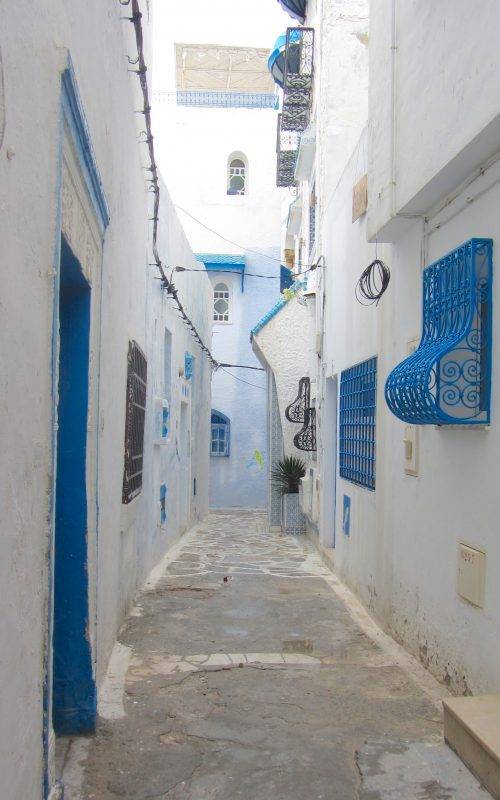
If you definitely want a souvenir shopping day at Nabuel market, then work your itinerary around Friday being market day. Nabuel market is one of the best day trips from Hammamet.
Day 6 Kairouan (1 day)
Kairouan was one of my favourite travel days in Tunisia. This relaxing little town has a very authentically Tunisian vibe with a deep history in crafting of Tunisian rugs (yes, you will find yourself at some point in a carpet shop!) The town has expanded further as the university has developed and so it is a popular place for students. Here’s what you shouldn’t miss in Kairouan…
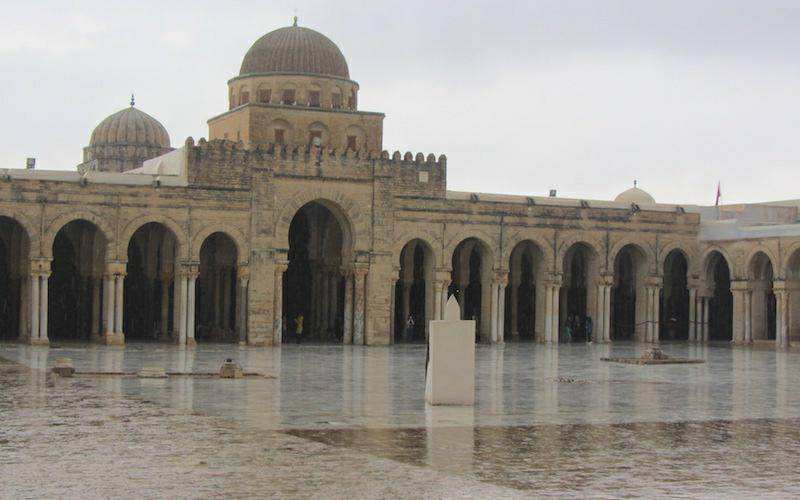
- Kairouan Great Mosque – The Oldest Mosque in North Africa which was built using columns taken from Carthage. The Mosque has 9 babs (Gates) and an extensive courtyard with irrigation and a sundial. Tourists can visit the courtyard of the mosque and see inside the main mosque (but not enter the prayer hall).
- Zaouia of Sidi Sahab – This stunning 17th Century complex contains a Mosque (with minaret), a madrasa (Qu’aranic school) and a mausoleum.
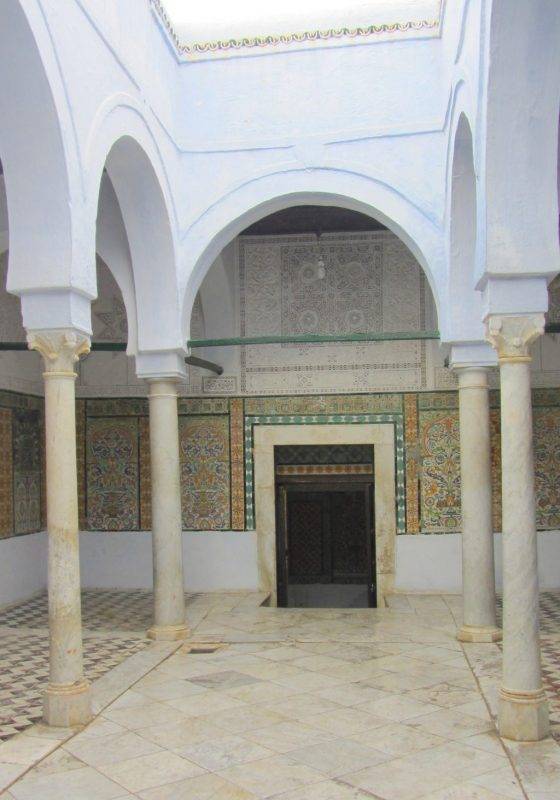
Read more about the Great Mosque of Kairouan and the Zaouia of Sidi Sahab here.
Day 7-8 Sousse (2 days)
On your first day in Sousse you will explore the Medina of Sousse including the Ribat, the Kasbah, ramparts, Bou Ftata Mosque and the Great Mosque. The Medina of Sousse is a UNESCO World Heritage site.
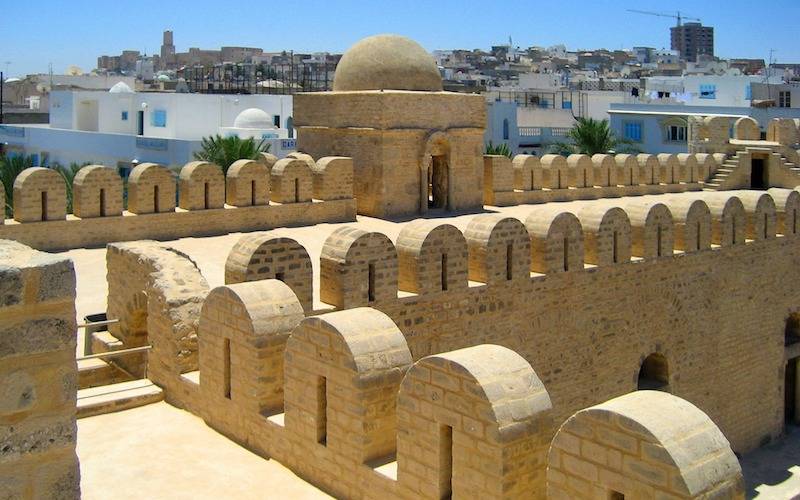
Day 2 in Sousse you have time to explore the fascinating Museums of Sousse including the Sousse Archaeological Museum and the Museum of Dar Essid. You might also enjoy a walk around the harbour at Port El Kantaoui.
Day 9-10 Monastir (2 days)
Monastir was traditionally a fishing port, but is now a popular tourist destination. Spend at least two days here exploring the central area and there is also a couple of decent beaches if you are looking to relax. In Monastir don’t miss….
- Bourguiba Mosque – Mosque dedicated to the first President of Tunisia who was born in Monastir.
- Mausoleum of Habib Bourguiba – Resting place of the first president of Tunisia, with a Marble Octagonal hall that houses the tomb.
- Great Mosque of Monastir – Beautifully positioned near the sea with a decorated Mihrab.
- Monastir Ribat – Impressive Arabic fortress.
- Beaches and water sports – It’s calmer and more relaxing than the other beach resorts.
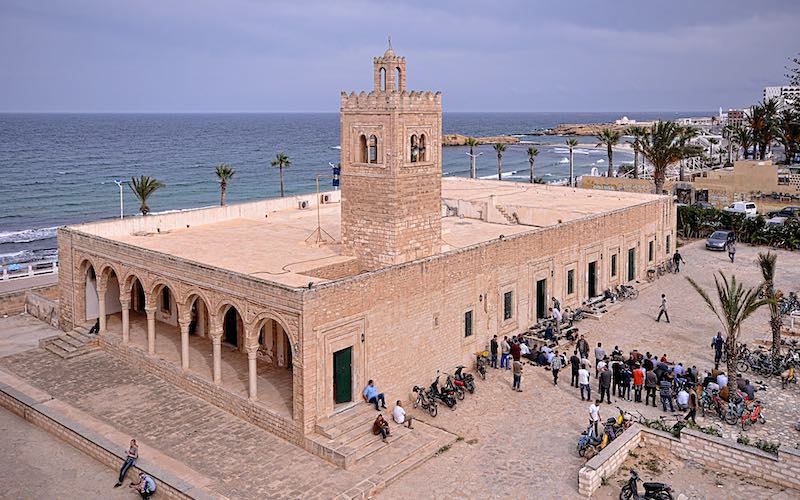
Day 11 El Jem (1 day with travel to Sfax)
El Djem was one of my favourite things to do in Tunisia, and geographically it fits in well as a stop off en route from Monastir to Sfax. This stunning Roman amphitheatre is better preserved than the Colosseum in Rome. There isn’t too much to see in El Djem other than the amphitheatre, so stopping off just to see this and then moving on is absolutely fine and what most people do.
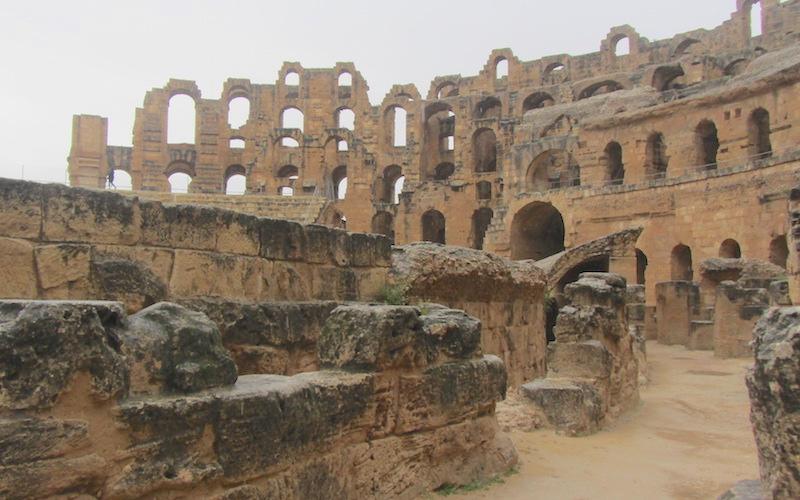
Day 12 Sfax (1 days)
Sfax is a slightly more industrial city than the touristy resorts of Sousse and Monastir. I would say that a day of sight seeing in Sfax is enough and then continue your Tunisia itinerary by moving on to Djerba. Things to see in Sfax…
- Sfax Grand Mosque
- Dar Jellouli Museum (temporarily closed)
- Beb Eddiwen, Bab Jebli and Sfax Medina
Finally, for your last 2 days, head to Djerba island, where you will find interesting architecture, a handicrafts market and wonderful places to relax.
Day 13-14 Djerba (2 days in total)
I’m recommending at least two days in Djerba, but actually if you can stretch to it take three or four. Djerba is famous for its white sandy beaches and whitewashed domed houses, and the people of Djerba consider themselves culturally different to mainland Tunisia and try to preserve their traditions. Djerba is a great place to end your Tunisia Itinerary because it is so relaxing. And there is one thing that I always rave about when anyone mentioned Djerba – El Ghriba synagogue.
Here are the main things to do in Djerba and it is possible to see all of these in one day and then rest or shop on your second day in Djerba. However, I would prefer to take it slow and spread these activities over two days.
- Guellala Museum – A modern building that houses traditional artefacts and displays of life on the island.
- El Ghriba Synagogue – Africa’s oldest synagogue, believed to date back to 586 BC, with a stunning interior of blue and white tiles.
- Houmt Souk city centre – Get you fill from shopping in the souk again! Djerba souk is famous for its beautiful ceramics.
- Djerbahood – Djerba’s outdoor street art exhibition.
- Lalla Hadria Museum – Over 13 Centuries of Islamic art, including a panorama of Tunisian art.
- Djerba Crocodile Farm – With crocodile feeding shows (not everybody’s cup of tea!)
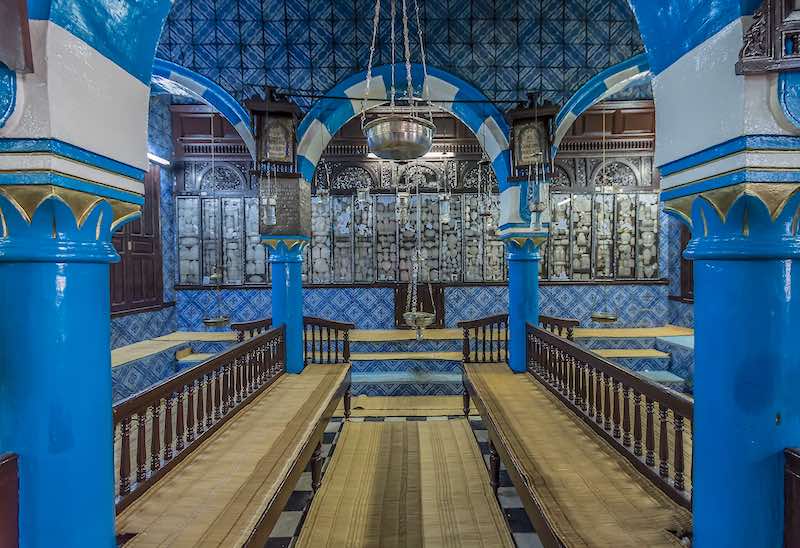
Optional Add-on – Tozeur
If you are not totally worn out after all that, you may want to continue your journey to Tozeur. You will be travelling West and inland towards the Sahara dessert. There is a Medina, Mosque and the Dar Cherait Museum to explore in Tozeur. But what most people love to go to Tozeur for are the desert and oasis scenes used in the filming of several star wars scenes. The gorge near the small town of Bouhlel is called Star Wars Canyon because nine scenes were filmed there.
Further Reading for your Tunisia Itinerary
- My Holiday to Tunisia – The Good, The Bad and The Ugly
- What to wear in Tunisia
- 3 days in Tunisia
- Visiting the most famous Mosques in Tunisia
- 10 amazing things to do in Tunisia
- Is Tunisia worth visiting?
